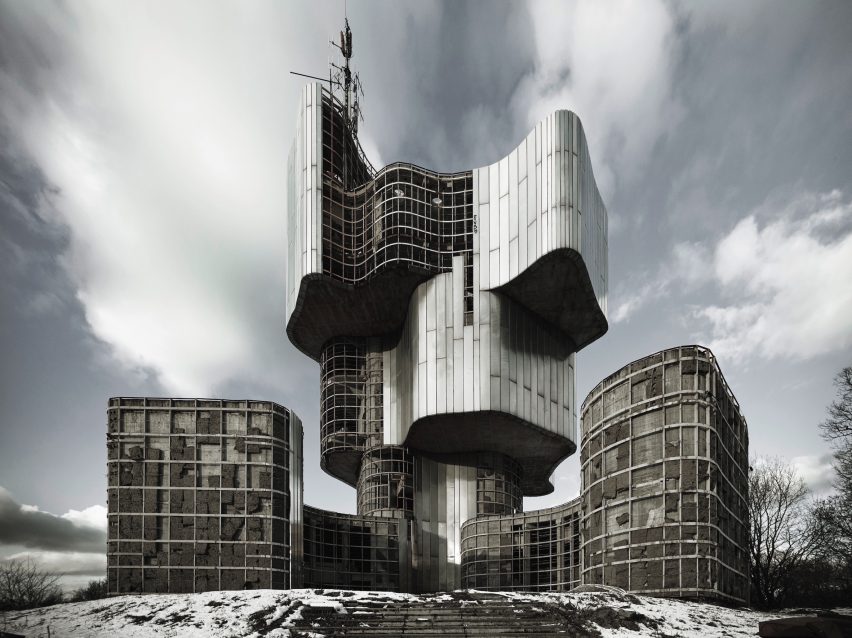
Valentin Jeck photographs Yugoslavia's concrete architecture for MoMA exhibition
Photographer Valentin Jeck has travelled around the region of former Yugoslavia to capture images of its brutalist architecture for MoMA's Toward a Concrete Utopia exhibition.
Jeck's series of images are blown up and displayed around the galleries of the New York museum as part of the exhibition, which opened to the public yesterday, 15 July 2018.
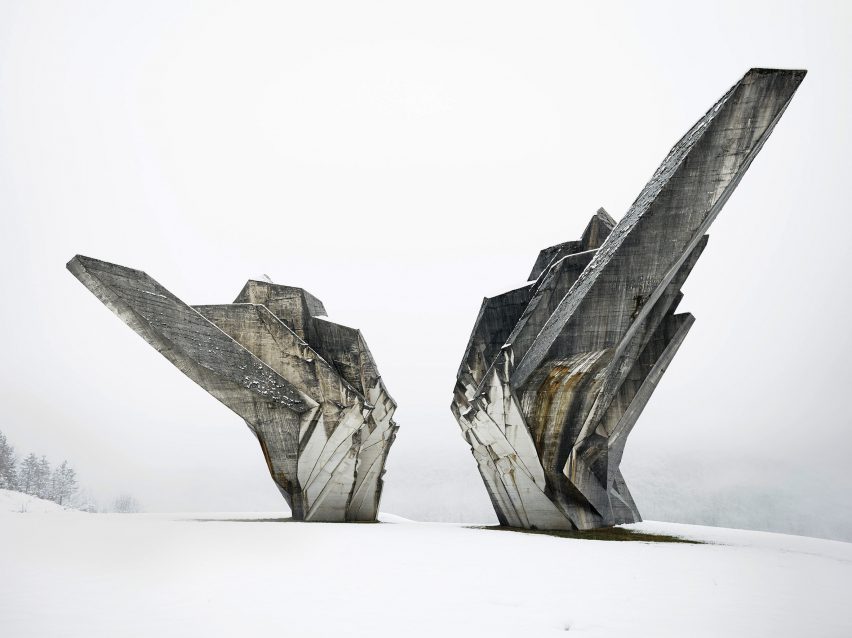
Titled Toward a Concrete Utopia: Architecture of Yugoslavia, 1948-1980, it presents the buildings designed to shape a national identity during the socialist country's formative years.
Jeck was commissioned by MoMA to take photos of the most impressive examples of architecture from the period, many of which were built from concrete in an expressive brutalist style.
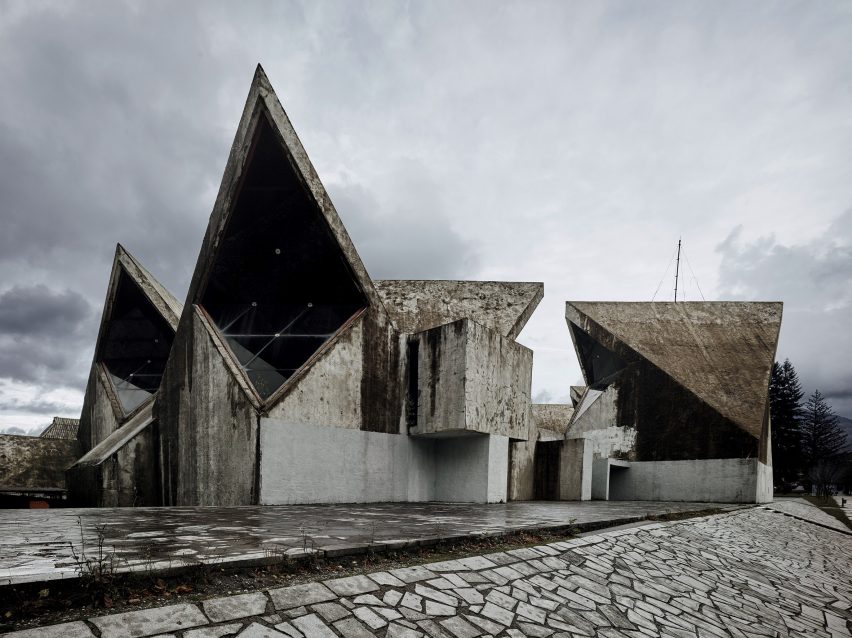
The Swiss-based photographer, who has plenty of experience capturing these types of buildings, was given free reign on the project.
"I had no specific brief," he told Dezeen. "I was completely free to choose the style and the look. They gave me a list of the relevant buildings and monuments, and the contacts of the individuals at the sites."
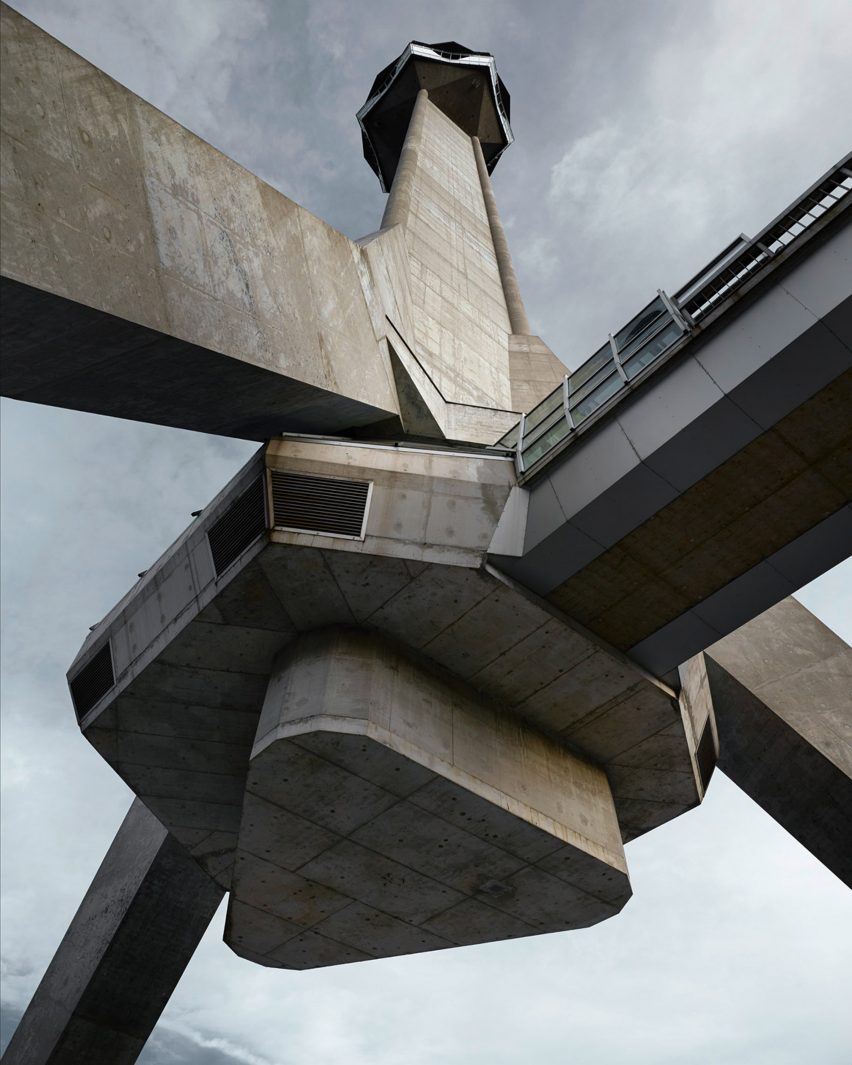
Over the past two years, he made seven separate trips to the countries of former Yugoslavia, which include Croatia, Serbia, Slovenia, Bosnia and Herzegovina, Macedonia, Montenegro, and the still-disputed territory of Kosovo.
"I was well-accompanied by local advisors who were also involved in the exhibition," said Jeck. "Normally there was no problem, except at those with military relevance."
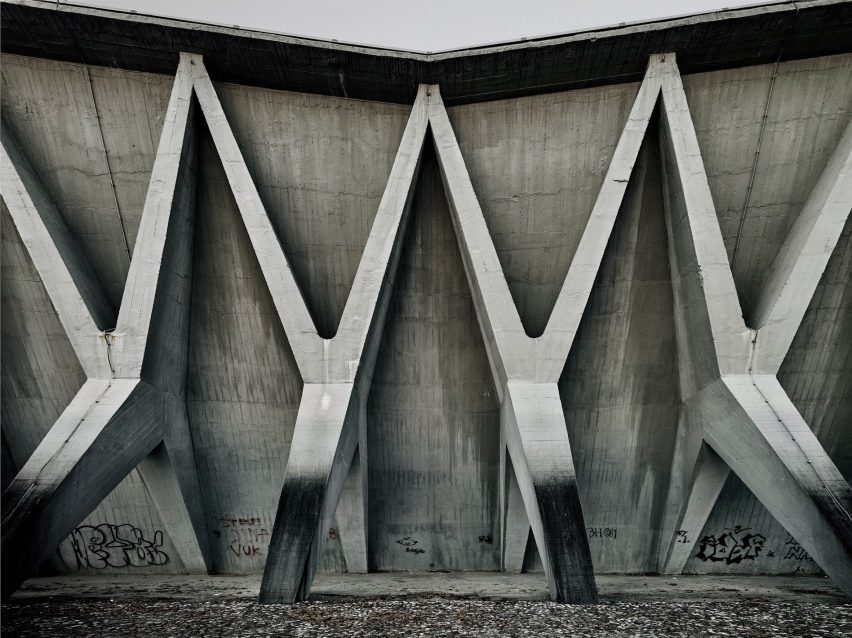
During his visits, he found many of the structures in poor repair, as seen in some of the images where scaffolding is erected and landscaping is overgrown around them. But the aged and weathered concrete made for more interesting imagery, Jeck said.
"The raw concrete structures are very photogenic," he said. "I like the patina, especially the fact that they're not restored and in their original condition."
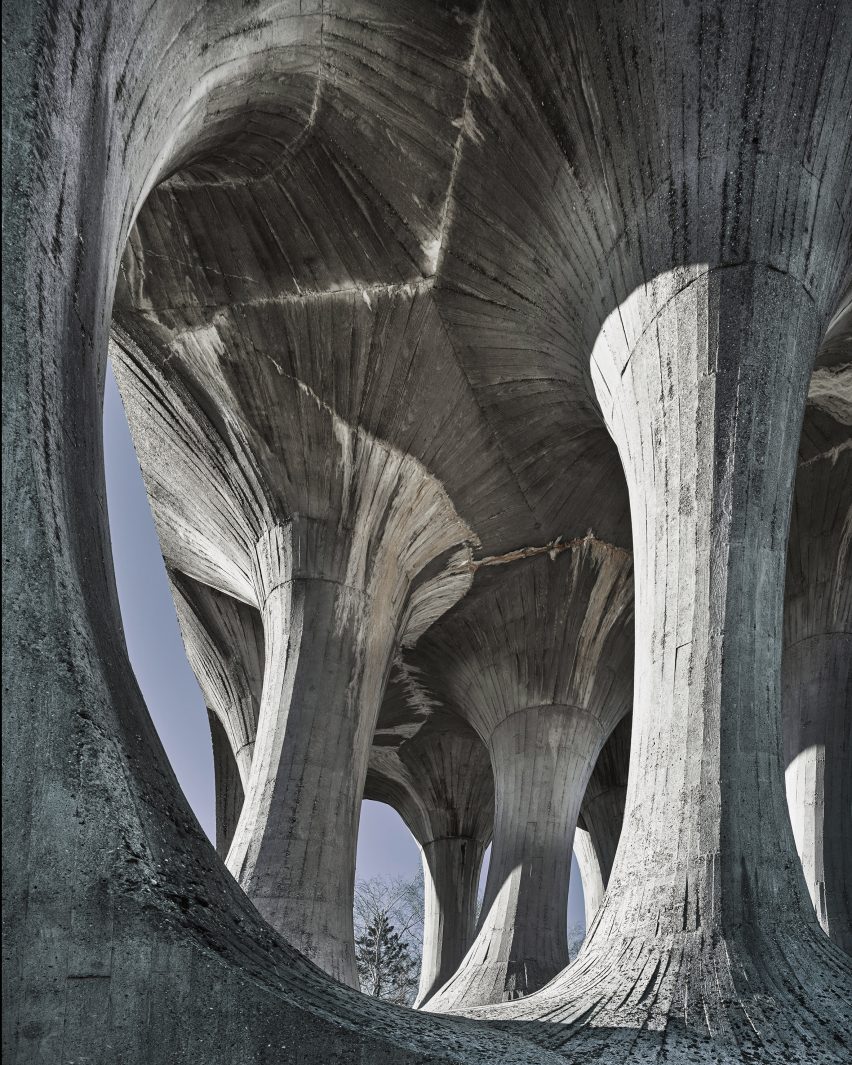
Jeck produced hundreds of photos for the exhibition, which were whittled down to the final selection by the MoMA curators.
The featured buildings and monuments include Belgrade's 205-metre-tall Avala TV Tower, which was originally built in 1965 but destroyed during NATO's bombing of the city during the Yugoslav wars in 1999. It was later reconstructed, and reopened in 2010.
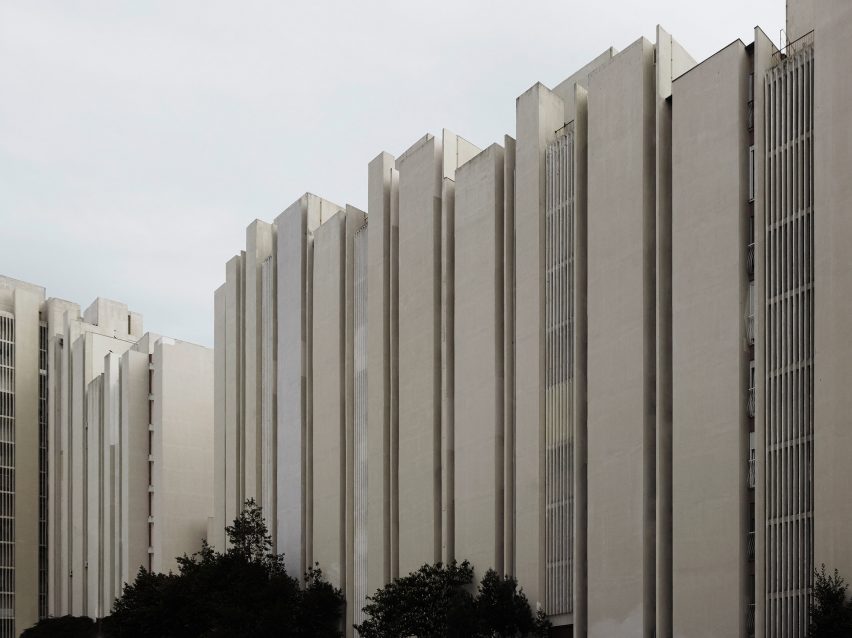
Among other highlights are the Monument to the Battle of Sutjeska – one of many structures built across the region to commemorate those who died during the second world war. Shown in the snow, the monument comprises a pair of structures that look like huge chunks of carved rock and are shaped to splay away from one another.
A telecommunications centre in Skopje, social housing in Spilt, a library in Pristina and an office tower in Ljubljana are also on show as part of the series.
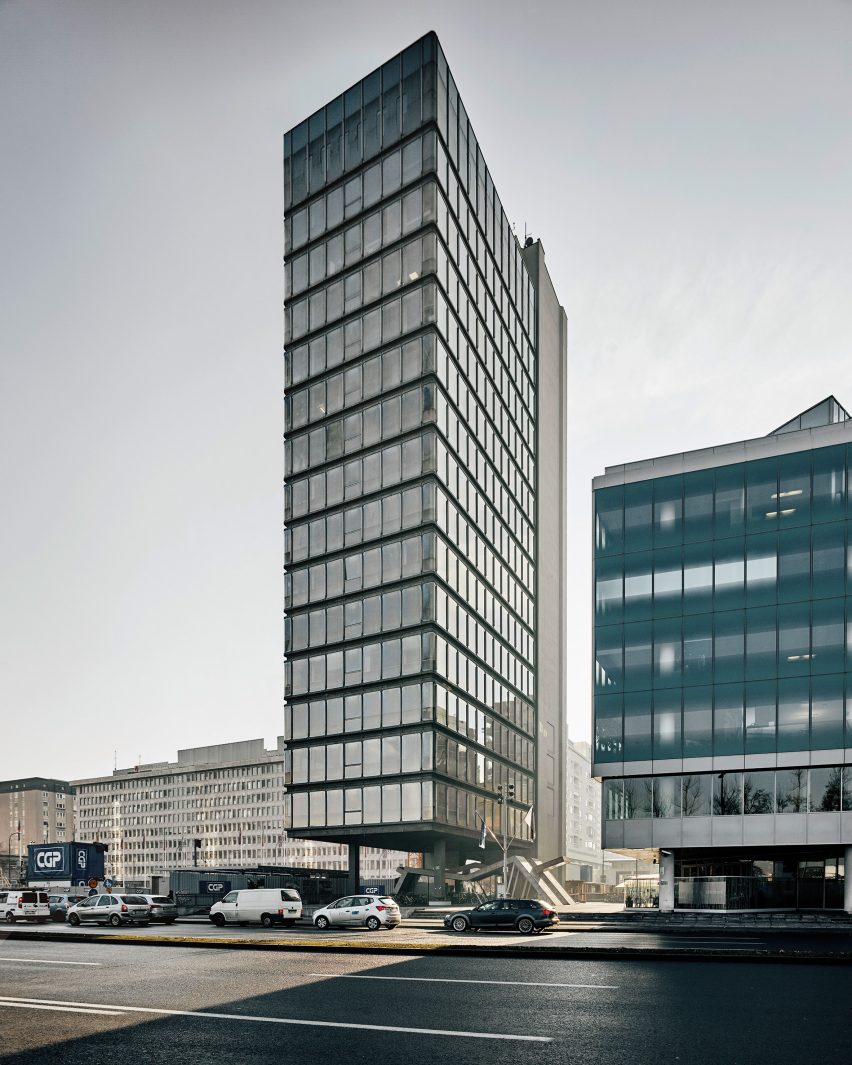
Jeck said that by undertaking the assignment, he gained a better understanding and developed a greater admiration for the buildings.
"The designs of the 1950s and 1960s are very interesting to me," he said. "The longer I worked on [the project] the more I appreciated the work."
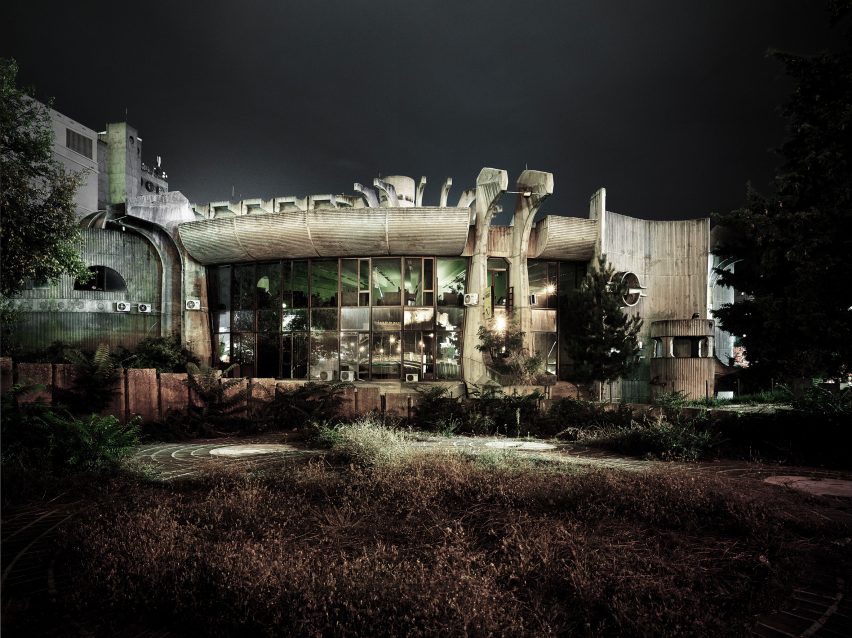
Toward a Concrete Utopia is on show in MoMA's third-floor Robert Menschel Galleries until 13 January 2019. All photographs are by Valentin Jeck, commissioned by The Museum of Modern Art.